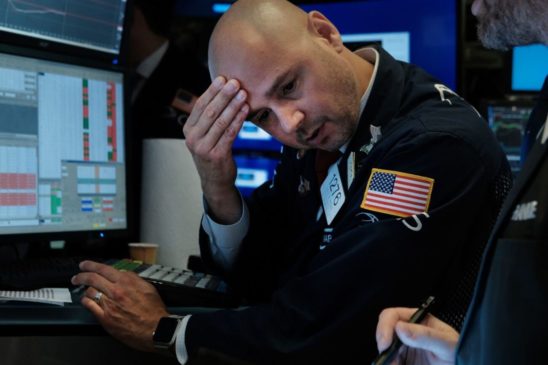- Nearly 100 major corporations have filed for bankruptcy.
- More companies are under significant financial pressure as debt soars to over $500 billion.
- Expect more bankruptcies in the coming months as the U.S. economy struggles to reopen.
Nearly 100 major corporations have filed for bankruptcy this year. That’s happening even amid the multi-trillion-dollar government bailout and the Federal Reserve activating its money-printing machine in full force. Expect more big business names to go under in the coming months as companies struggle to pay their debts.
The Pandemic Pushed Many Struggling Companies Over the Cliff
We are now starting to see the impact of the pandemic on American companies.
While companies such as Facebook and Amazon thrived in the new normal, thousands of businesses did not have the same fortune. The Washington Post reports that over 100,000 small businesses have shuttered their doors as shelter-in-place orders weakened demand for nonessential goods and services.
Public companies also succumbed to the economic fallout of lockdown measures. A new study reveals that nearly two-thirds of publicly-listed restaurants are at risk of going under. These include famous names like Potbelly Corp., Chili’s parent Brinker International Inc., and Bloomin’ Brands Inc.
It seems that no company is too big to fail as large retail chains such as J.Crew Group, JCPenney, and Tuesday Morning found the effects of pandemic insurmountable. Bloomberg reports that 99 firms with liabilities of over $50 million have already filed for bankruptcy this year.
At the current pace, the number of large corporations going belly up this year will likely exceed the number of bankruptcies at the height of the global financial crisis.
Distressed Debt Is Skyrocketing, and Virtually All Business Are at Risk
The wave of bankruptcies is far from over. Bloomberg reports that distressed debt has hit multiple sectors of the economy and has risen to over half a trillion dollars.
Distressed debt refers to company loans that are considered to be under significant financial pressure. These firms will probably fail to meet their financial obligations to debtholders.
Everyone’s distressed watch list has become so big that it doesn’t even make sense to call it a watch list — it’s everyone,
says PJ Solomon’s head of debt advisory Derek Pitts.
As debtholders fear that borrowers may default on their debt, they try to liquidate the distressed bonds by selling them to hedge funds who see the potential of significant returns that come with high risks. The number of distressed bonds sold can be an indicator of bankruptcies to come.
As civil unrest sweeps across the United States, the prospect of a swift economic recovery looks bleak.
The timing could not have been worse. All of a sudden we have 90% of the population in the U.S. in a phase back state, and now you are trying to reopen the small businesses and the social unrest really derails the economic recovery. I think more than anything it pushes [the recovery from the COVID-19 pandemic] back,
says Deutsche Bank executive Deepak Puri.
The wave of bankruptcies is far from over.
Disclaimer: This article represents the author’s opinion and should not be considered investment or trading advice from CCN.com.
This article was edited by Sam Bourgi.




